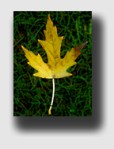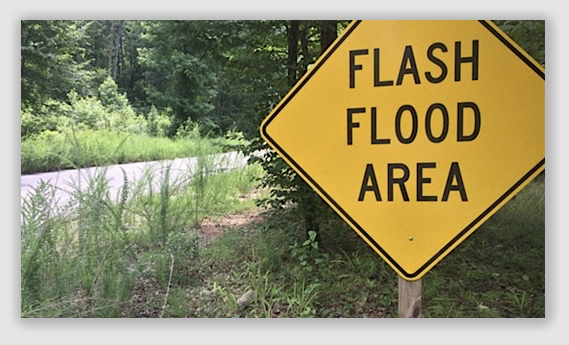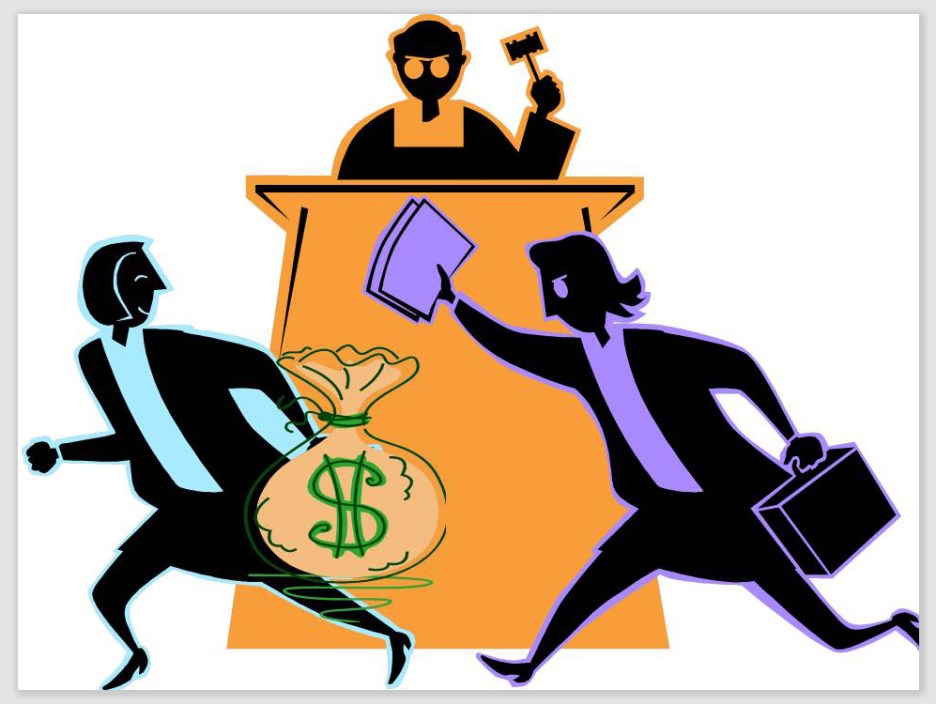A “READILY APPARENT” THUMP
 A great philosopher perhaps put it best: a very long journey can sometimes end suddenly… and rather badly.
A great philosopher perhaps put it best: a very long journey can sometimes end suddenly… and rather badly.
Howie Conine should have had the Despair, Inc. “Ambition” poster on his wall, where he could have contemplated its message. He surely could empathize with the hapless salmon. He and his wife had their journey end one rainy day on Washington State Route 524 – suddenly and very, very badly. A redwood tree on County of Snohomish land – the hazardousness of which was “readily apparent” – fell on their car with a readily apparent thump.
The law of the jungle gives the poor king salmon no right of appeal, no habeas corpus, no forum for damages suffered when her trip upstream ends so precipitously in the jaws of an ursus arctus horribilis. Fortunately for the Conines, the law of Washington State was more hospitable after the tree fell onto their passing car (with them in it). If anything, it was a perfect storm for them: they possessed evidence that the dangerous condition of the tree was “readily apparent,” they were in a notoriously friendly plaintiff-friendly, and they had two defendants to choose from, both of which were governments and thus “deep pockets.”
But from whom to collect? The State of Washington, the government that, the Conines argued, had a duty to keep the highways safe from falling trees? Or perhaps the County of Snohomish, the government that, the Conines averred, had a duty to protect passers-by from dangers arising from trees on its land?
This is America – land of the free and home of the litigious! Why not sue both?
That is precisely what the Conines did.
 Unfortunately, they ran into an uncooperative trial court, one which held that neither Washington State nor Snohomish County had any obligation to inspect the trees along the road, even one with “this readily apparent hazard.” The trial judge threw the Conines out of court. They had more luck with the Court of Appeals, which reversed the trial court’s decision and remanded the matter for trial on the merits. There was enough evidence – chiefly from the Conines’ hired-gun expert – that the tree was obviously dangerous to let the case go to trial.
Unfortunately, they ran into an uncooperative trial court, one which held that neither Washington State nor Snohomish County had any obligation to inspect the trees along the road, even one with “this readily apparent hazard.” The trial judge threw the Conines out of court. They had more luck with the Court of Appeals, which reversed the trial court’s decision and remanded the matter for trial on the merits. There was enough evidence – chiefly from the Conines’ hired-gun expert – that the tree was obviously dangerous to let the case go to trial.
The lesson: when you need a good expert, there’s just nothing else that will do.
Conine v. County of Snohomish, 2007 Wash. App. LEXIS 1102, 2007 WL 1398846 (Ct.App. Wash., May 14, 2007). Howard and Karen Conine were driving on State Route 524 when a red alder tree standing on an embankment on the west side of the road fell on their car. The tree had been located about 10 feet outside the State’s right-of-way on land owned by Snohomish County. The Conines sued the State of Washington for failure to maintain the state highways in a safe condition and the County for failure to remove an obvious hazard from its property.
The Conines’ arborist testified that during the 6-12 months immediately preceding the tree’s failure, the tree’s appearance should have put anyone looking at it on notice that it was dead and decaying. The arborist said the tree was probably leaning 10 to 15 degrees downhill toward the road and would have been in the highest-risk category due to its condition and proximity to a public right-of-way. The DOT’s maintenance technician who removed the tree after the accident said the tree’s “root ball had come loose from the soil owing to the very wet conditions we had in January 2003.”
The trial court held that neither the State nor the County had a “duty to look for this readily apparent hazard” and granted summary judgment to the State. The Conines appealed.
Held: The summary judgment was reversed. The State’s liability to users of a road is predicated upon its having notice, either actual or constructive, of the dangerous condition that caused injury unless the danger was one it should have foreseen and guarded against.
The Conines conceded that the State did not have actual notice, but they argued that the tree’s visibly dangerous condition created constructive notice. The Court found that the question to be answered was whether, for constructive notice, the State had a duty to look for a readily apparent hazard. Although the Washington Supreme Court had held in another case that where the tree was on a remote, mountainous, sporadically traveled road, a high threshold for constructive notice of danger was needed to trigger a duty to inspect and remove a dangerous tree. But here, the road was a state highway in a populated area, and the risk to the traveling public shifted the risk analysis. What’s more, in the other case, the Supreme Court found that the tree that fell was no more dangerous than any one of the thousands of trees that lined mountain roads. By contrast, the Conines’ expert testified that the tree that fell was obviously a hazard. The differences, the Court said, precluded a finding that the State lacked constructive notice as a matter of law. Constructive notice that a tree was dangerous gives rise to a duty to inspect. Thus, summary judgment was improperly granted on the basis of no duty to inspect.
 The Conines also contended that Snohomish County faced liability as the landowner of the property upon which the tree stood because the owner of land located in or adjacent to an urban or residential area has a duty of reasonable care to prevent defective trees from posing a hazard to others on the adjacent land. The County argued that it had no such duty because the tree was a “natural condition of the land.”
The Conines also contended that Snohomish County faced liability as the landowner of the property upon which the tree stood because the owner of land located in or adjacent to an urban or residential area has a duty of reasonable care to prevent defective trees from posing a hazard to others on the adjacent land. The County argued that it had no such duty because the tree was a “natural condition of the land.”
The Court held that when the land is located in or adjacent to an urban or residential area and when the landowner has actual or constructive knowledge of defects affecting his trees, he has a duty to take corrective action. The area in question was next to the City of Lynnwood and zoned urban residential. Thus, it was urban in character. The Conines produced expert evidence that the subject tree was obviously dead or dying and leaning for two years, that it looked like a forked snag and lacked fine or scaffold branches. This evidence, the Court said, created an issue of material fact as to whether the tree was in a defective condition and the condition was of sufficient visibility and duration to give the County constructive notice of a potential hazard.
– Tom Root























